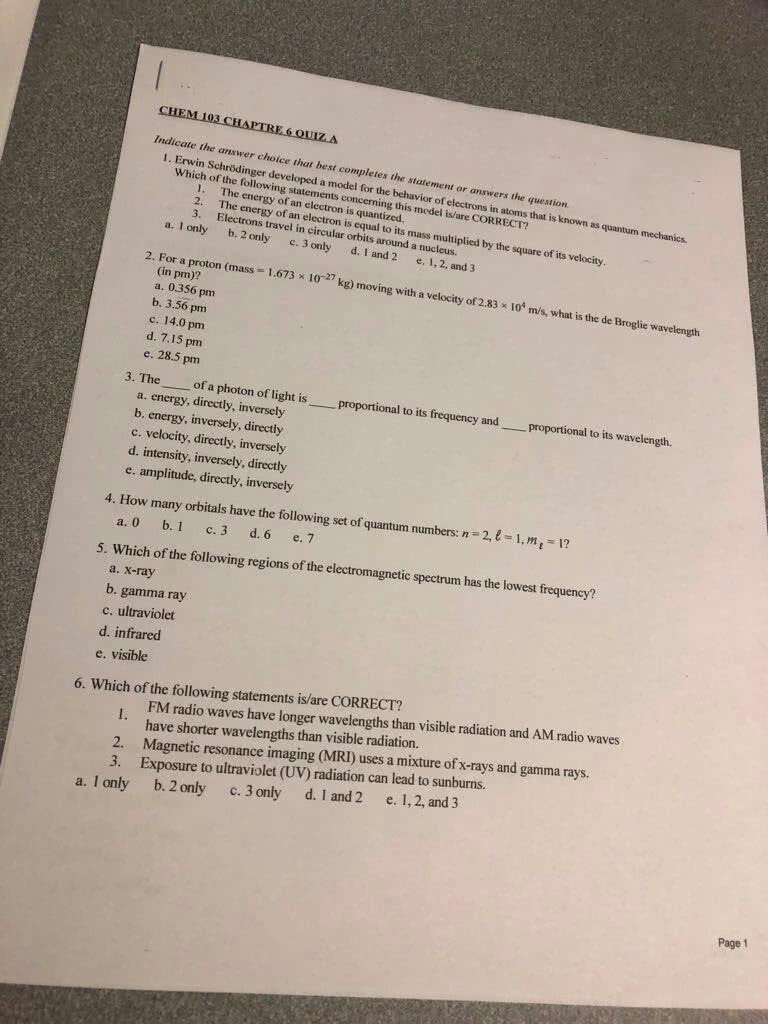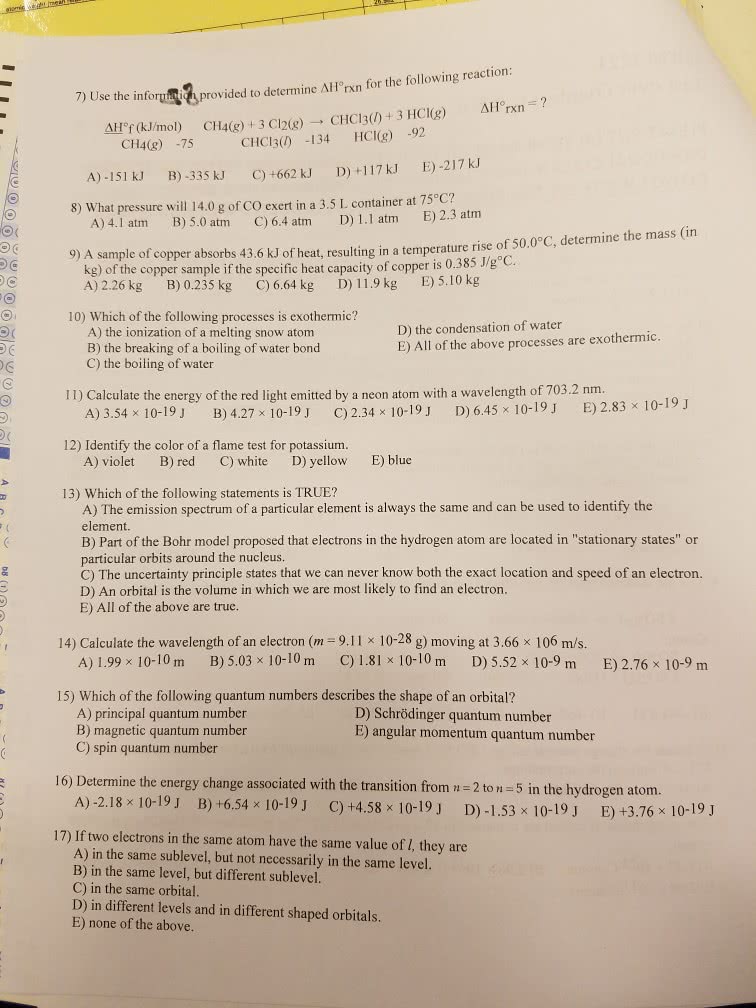CHE 101 Lecture Notes - Lecture 6: Matter Wave, Uncertainty Principle, Bohr Model

Chapter 6
Electronic Structure of Atoms
A. Atoms
B. Wave Mechanics
C. Orbitals
D. Electron Spin
E. Orbital Filling
F. Electronic Configurations
A. Atoms and Atomic Theory
Postulates:
1. Lucretius – sour atoms have barbs; bland atoms are smooth
2. Dalton’s Atomic Theory- Atoms of different elements are different and not changed into
each other by chemical reactions- Alchemy refuted
3. Electrons are discovered-
a. Mass = 9.11 x 10 ^-28 g
b. Charge= 1.6 x 10 ^ -19coul
4. Rutherford Gold Foil- all weight (mass) is in the nucleus
5. Spectroscopy- Line spectra are different for each element- light
a. Wavelength: Lambda
b. Frequency: Nu
c. Frequency x Wavelength = C (Speed of light: 3.0 x 10^8 m/s)
6. Bohr Atom- A planetary model- quantum condition
a. Nucleus in the middle and orbitals around it
b. Labeled with quantum numbers
7. De Broglie- wave nature of an electron
a. 2pi r = n lambda
b. lambda = h/mv
i. h= Planck’s constant
ii. m= mass
iii. v= velocity
iv. (page 223)
8. Heisenberg Uncertainty Principle
a. (Deltax)(Delta p) is Greater than or equal to h/4pi
B. Wave Mechanics- Electrons as waves P. 226
Using classical physics equations for waves one can solve for the energy of an electron-
Schrodinger
- ( h^2 ) d^2 x Wave function (psi) + V x Wave function = E (Energy) x Psi
8 pi^2m dx^2
find more resources at oneclass.com
find more resources at oneclass.com
Document Summary
Electronic structure of atoms: atoms, wave mechanics, orbitals, electron spin, orbital filling, electronic configurations, atoms and atomic theory. Using classical physics equations for waves one can solve for the energy of an electron- ) d^2 x wave function (psi) + v x wave function = e (energy) x psi. The bohr theory gave energy, e n, and radius r n. Quantum mechanics gives wave functions psi n, l, Since an electron can"t be precisely located, one must be satisfied with probability which is proportional to (psi)^2. The wave functions are called orbitals and have corresponding energies. Each orbital is described by three quantum numbers, psi n, l, mf, n is the principle quantum number and may take integer values greater than or equal to one (n. Larger values of n mean that the lectron spends more time away from the nucleus. L is the azimuthal quantum number that defines the shape of the orbital.




